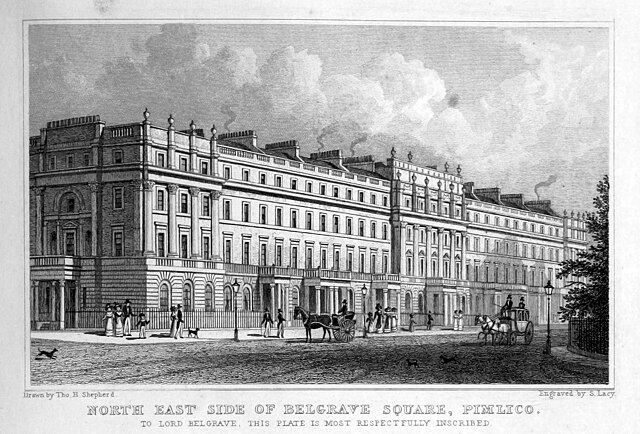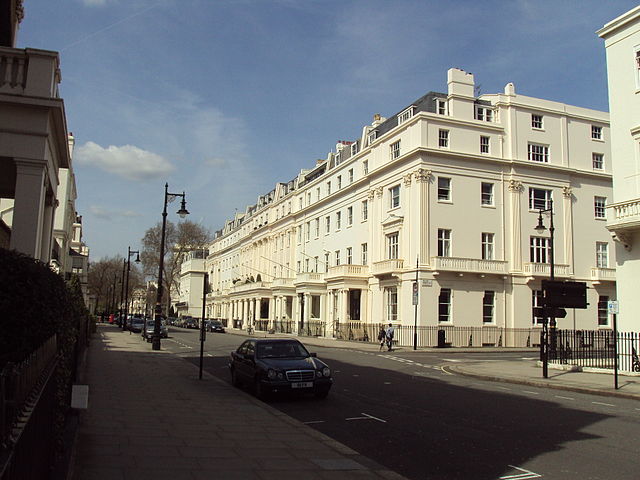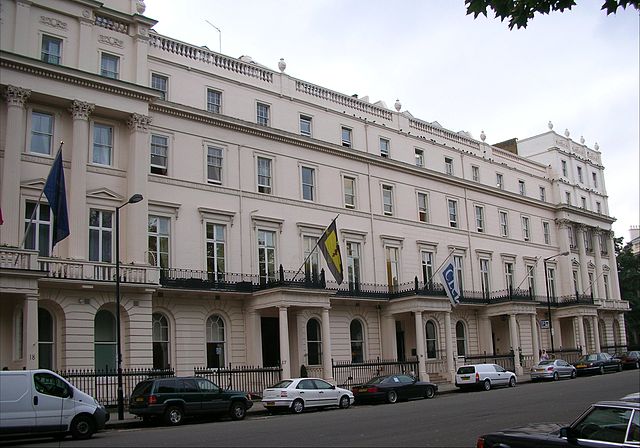Belgrave Square is a large 19th-century garden square in London. It is the centrepiece of Belgravia, and its architecture resembles the original scheme of property contractor Thomas Cubitt who engaged George Basevi for all of the terraces for the 2nd Earl Grosvenor, later the 1st Marquess of Westminster, in the 1820s. Most of the houses were occupied by 1840. The square takes its name from one of the Duke of Westminster's subsidiary titles, Viscount Belgrave. The village and former manor house of Belgrave, Cheshire, were among the rural landholdings associated with the main home and gardens of the senior branch of the family, Eaton Hall. Today, many embassies occupy buildings on all four sides.
Typical buildings in Belgrave Square
The north-east side of Belgrave Square, soon after construction
Statue of Prince Henry the Navigator in Belgrave Square, erected in 2002
42-45 Belgrave Square
Belgravia is a district in Central London, covering parts of the areas of the City of Westminster and the Royal Borough of Kensington and Chelsea.
Chester Square, Belgravia, in March 2009
Belgrave Square in the late 1820s, shortly after construction
Upper Belgrave Street, Belgravia
The former Royal College of Psychiatrists, Belgrave Square







